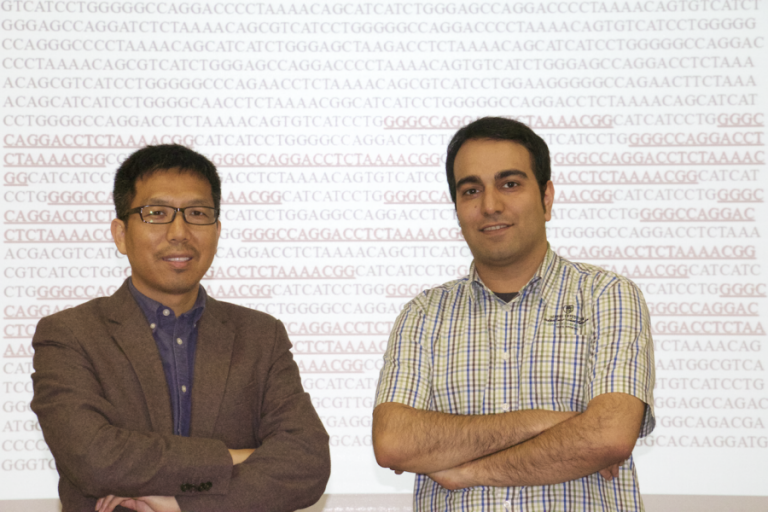Like real estate, gene expression is all about location, location, location – and a team of University of Central Florida researchers has just helped create a colored genetic map that doctors studying cancer can use to figure out how the disease works.
Engineering associate professor Shaojie Zhang and graduate student Ardalan Naseri created a software program that mines the human genome for certain chromosomal-specific repeated sequences. The human genome is full of repeating patterns and while researchers know a lot about certain patterns and their biological functions, much remains unknown.
UCF’s team has designed a reliable software pipeline to find those repeated sequences that a University of Massachusetts Medical School team then used to start creating a color map to figure out exactly where chromosomes are within the human cell’s nucleus – a mysterious and very tight-knit community. While the human genome project in 2001 revealed the human body’s blueprint, how each part of that extensive blueprint works remains a mystery.
Doctors Hanhui Ma and Thoru Pederson from the University of Massachusetts Medical School led the study, which looked to use the clustered, regularly interspaced short palindromic repeats (CRISPR) multicolor labeling system to further the understanding of the dynamics of human chromosomes and disease progression at 3-D genome level. The team’s work appeared online in the Proceedings of the National Academy of Sciences on Feb. 23.
Studying the nucleus of human cells is tough work because the center holds 23 chromosomal pairs that are the blueprint for the human body. Those chromosomes live in very tight bundles within the nucleus. Scientists have already linked several chromosome errors to specific birth defects, but they suspect that other smaller errors or mistakes in copying the pattern may be linked to other disease, such as cancer.
“Our goal was to find target sites with high copy numbers and certain repeat lengths, while taking into account that the target sequences should be specific for each location,” said UCF’s Zhang. “We have developed an efficient software pipeline to detect such target sites in the human genome.”
The CRISPR-based multicolor labeling system is relatively cheap, quick and accessible for researchers, Zhang said. The approach is an avenue for bar coding elements of the human genome.
“This technology will provide a new toolkit for studying and monitoring the behavior of the nucleus in living cells,” he said.
Other authors of the study include Pablo Reyes-Gutierrez and Scot A. Wolfe from the University of Massachusetts Medical School.
Zhang is an associate professor of computer science. He joined UCF in 2007 and runs the Computational Biology and Bioinformatics Group. He has several degrees including a Ph.D from the University of California at San Diego. He has had dozens of scholarly articles published and is currently work on a National Institutes of Health grant pertaining to RNA structural motifs.
